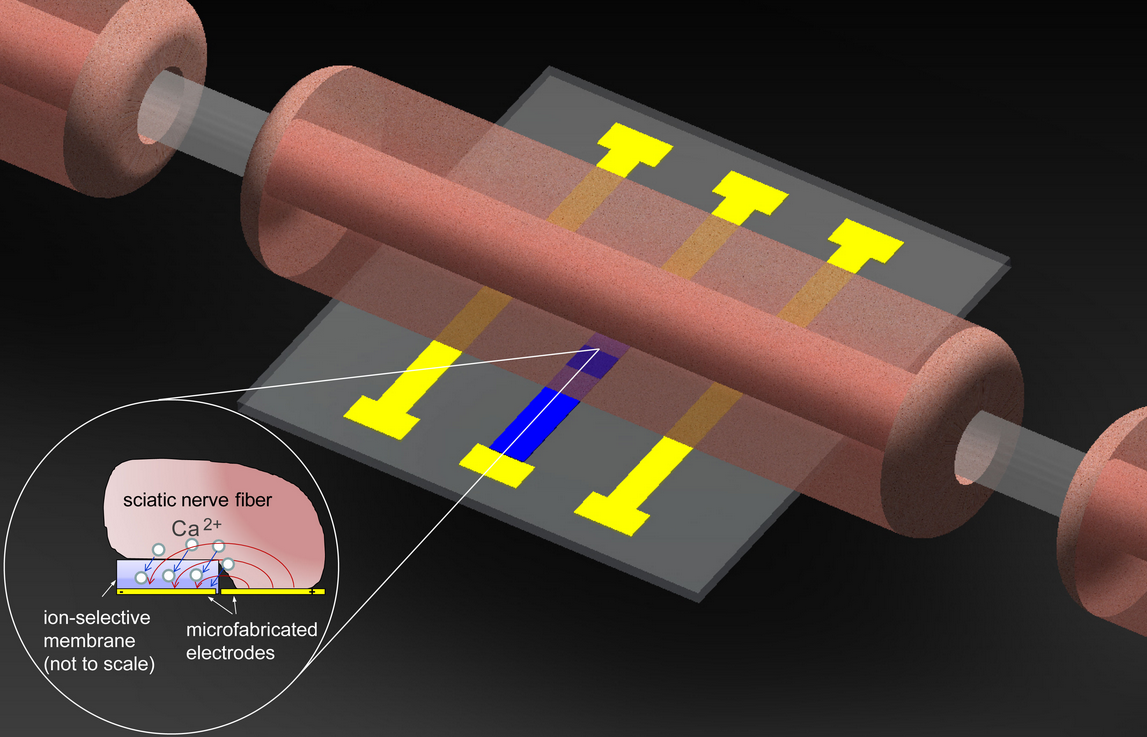Improved neurostimulators reduce pain
October 31, 2011

Ion-selective microelectrodes for low-power electrochemical stimulation and blocking of neuromuscular systems (credit: Yong-Ak Song)
Researchers at MIT and Harvard Medical School have improved the devices that stimulate damaged nerves (from epilepsy and other conditions), reducing potential side effects from neurostimulators (the electrical current can spread to nearby nerves, causing painful side effects). The improvements may also also help restore function to people with nerve damage.
The researchers reduced the concentration of positively charged calcium ions from the fluid surrounding a nerve by coating the neurostimulator electrode with a thin layer of an ion-selective membrane. This calcium depletion influences voltage-gated ion channels and reduces membrane resistance, making it easier to activate the neuron when an electric current is applied.
Using this technology, the researchers were able to reduce the amount of electrical current needed by about 70 percent, so they were able to reduce the current traveling along a nerve. This could have important applications in shutting off the haywire electrical activity characteristic of epilepsy, in relieving chronic pain, and generally improving the function of neuroprosthetics.
Ref.: Yong-Ak Song et al., Electrochemical activation and inhibition of neuromuscular systems through modulation of ion concentrations with ion-selective membranes, Nature Materials (2011) [doi:10.1038/nmat3146]